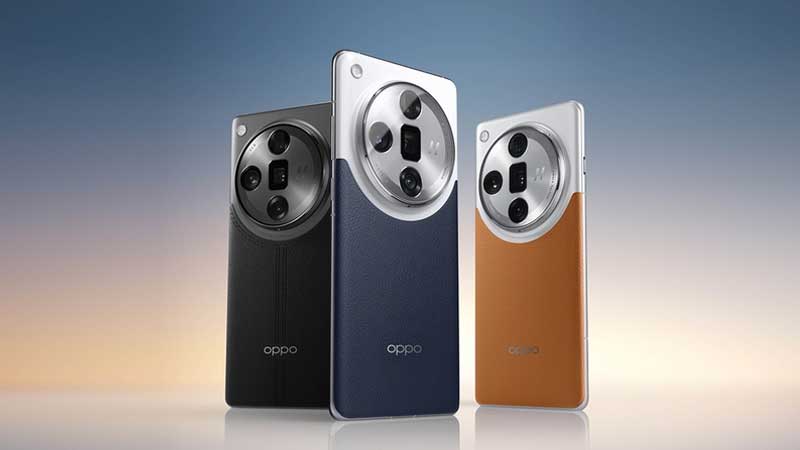The Oppo Find X7 Ultra has recently been announced as the first smartphone equipped with dual-periscope zoom lenses. If you’re curious about what a Periscope Camera in a mobile device is, how it operates, and how it compares to other camera technologies such as Optical Zoom or Digital Zoom, read on for an explanation.
What is a Periscope Zoom & How it works?
At a basic level, a camera functions by directing light through lenses onto a camera sensor, which then converts that light into an image. To capture a wide field of view (FOV), mobile cameras aim to include as many objects as possible in their photos. Increased zoom capability allows for a larger FOV, enabling the camera to cover more objects or areas within a single photo.
However, there are design limitations and form factor considerations that prevent the incorporation of large lenses commonly found in DSLR cameras. This is where the periscope zoom technology comes into play.
A periscope zoom system involves a unique arrangement of lenses that allows for an extended optical zoom without significantly increasing the thickness of the smartphone. Instead of having the lenses arranged linearly, a periscope design employs a reflective mechanism, resembling the periscope in a submarine, to redirect light at a right angle.
This setup enables the integration of longer focal lengths within the confined space of a smartphone. As a result, the Oppo Find X7 Ultra’s dual-periscope zoom lenses provide users with enhanced zoom capabilities, allowing them to capture distant subjects with clarity, all while maintaining a sleek and portable device design.

To overcome this limitation, smartphone manufacturers come out with different tech to power up the camera zoom. This is where Digital Zoom, Optical Zoom, and Periscope Zoom come into the picture. You can read the difference between them in the below para. To understand how Periscope works, imagine a submarine. Soldiers in submarines use a periscope to look above the surface of water without leaving their spot. This is somewhat similar to how the Periscope camera works in smartphones.

Instead of light landing directly on the camera sensor, in a Periscope camera light is reflected 90-degree angle through the lens array and then it reaches the sensor. This allows the camera to have bigger zoom ratios. It also does not have any impact on the phone thickness, there is a moving lens mechanism that moves front and back to manage the zoom ratio.
Periscope Zoom Vs. Optical zoom vs. Digital zoom
Periscope Cameras rightnow are the top smartphone cameras in the market. Depending on the sensor and lenses used, a user can easily activate 5x to 10x magnification through the camera. Oppo Find X7 Ultra is the first device to have a dual Periscope Telephoto Camera backed by an advanced 1-inch Sony LYT-900 sensor. There are four 50MP cameras with large sensors used in Oppo’s HyperTone Camera system. Among these four two are Preiscope zoom cameras. Now let’s see how effective this camera tech is against Optimical and Digital Zoom.
- Optical Zoom – Relies on moving mechanical parts that try to enlarge the picture maintaining its resolution and sharpness. Widely used in Digital Cameras, it works well on big lenses.
- Digital Zoom – This is common in smartphones, it enlarges the picture while trying to maintain its resolution and sharpness similar to Optical zoom. But this is done on a software level, and chances are you might see snow in images. Digital Zoom is best for Macro shots.
- Periscope Zoom – Under this, the camera set uses moving lenses when the users zoom in or zoom out. The lenses travel front and back towards the sensor to get the best possible picture quality. The further you zoom, the bigger the focal length is trying to capture every detail possible.
Rightnow in comparison to Optical and Digital, Periscope Zoom is considered as best in mobile photography. Because it offers freedom of both capturing quality pictures of a landscape to macro photography. The camera tries to create images on the sensor level, compared to Digital Zoom which uses computational photography.

Source: Oppo
Oppo Find X7 Ultra’s HyperTone Image Engine tries to maintain the overall image integrity keeping it natural as seen with eyes. It also uses computational photography to enhance the image and preserve its components like shadow, mid-tones, etc. Oppo Find X7 Ultra’s AI-Enchanzed Zoom delivers an optical reach at 0.6x, 1x, 3x and 6x. The phone camera can capture pictures from 14mm to 270mm focal lengths.
There are more features in the camera part of Oppo Find X7 Ultra, that you can check out on its official press release.
